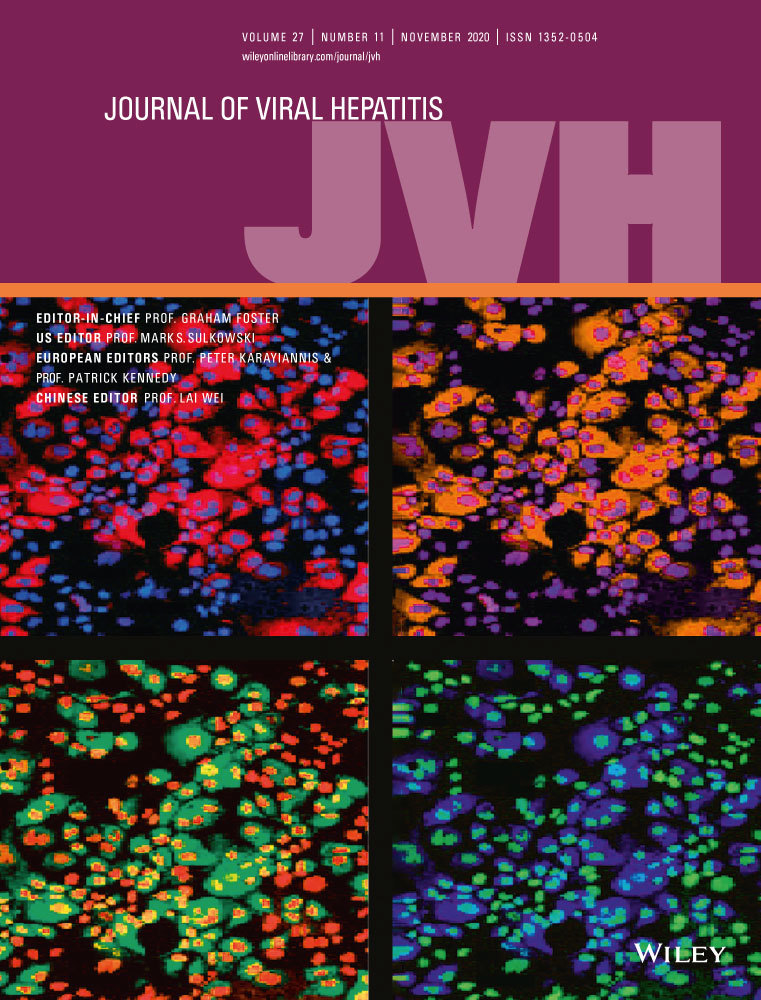Beneficial effects of DAAs on cardiac function and structure in hepatitis C patients with low-moderate liver fibrosis
Romano and Dalbeni equally contributed to this work.
Abstract
Hepatitis C virus (HCV)-related chronic infection has been associated with a higher incidence of cardiovascular diseases. An altered morphology and function of both left and right heart have been described in HCV patients; however, the causality of the association is still debated. Ninety-eight nonobese and nondiabetic HCV patients (59.5 ± 12.0 years; males 52%) with Fibroscan-Transient Elastography assessed low-moderate liver fibrosis that achieved sustained viral response at 12 and 24 weeks after DAAs (direct-acting antivirals) participated. 56 were matched with 52 control subjects for age, sex and cardiovascular risk factors at baseline. A trans-thoracic echocardiography was performed in each subject at baseline (T0) and repeated in all HCV patients after eradication (6 months later eligibility, T1). TNF-α and IL-10 were measured at baseline and at T1. A concentric remodelling of the left heart in HCV participants was identified, whereas tricuspidal annular plane systolic excursion, right indexed atrial volume, right basal ventricular diameter, inferior vena cava diameter and pulmonary arterial pressure were higher in HCV participants compared to matched controls. After virus eradication, left indexed atrial volume and all right cardiac chambers measures were lower than baseline. A significant reduction of TNF-α was shown at T1, while IL-10 did not change. This study shows a concentric remodelling of the left ventricle and structural modifications in the right sections in HCV patients compared to controls. Virus eradication with DAAs was associated with a reduction of the main right atrioventricular parameters indicating a direct involvement of the HCV in cardiac changes.
CONFLICT OF INTEREST
We wish to confirm that there are no known conflicts of interest associated with this publication, and there has been no significant financial support for this work that could have influenced its outcome. We confirm that the manuscript has been read and approved by all named authors and that there are no other persons who satisfied the criteria for authorship but are not listed. We further confirm that the order of authors listed in the manuscript has been approved by all of us. We confirm that we have given due consideration to the protection of intellectual property associated with this work and that there are no impediments to publication, including the timing of publication, with respect to intellectual property. In so doing, we confirm that we have followed the regulations of our institutions concerning intellectual property. We further confirm that any aspect of the work covered in this manuscript that has involved human patients has been conducted with the ethical approval of all relevant bodies and that such approvals are acknowledged within the manuscript. We understand that the Corresponding Author is the sole contact for the Editorial process (including Editorial Manager and direct communications with the office). He is responsible for communicating with the other authors about progress, submissions of revisions and final approval of proofs.




